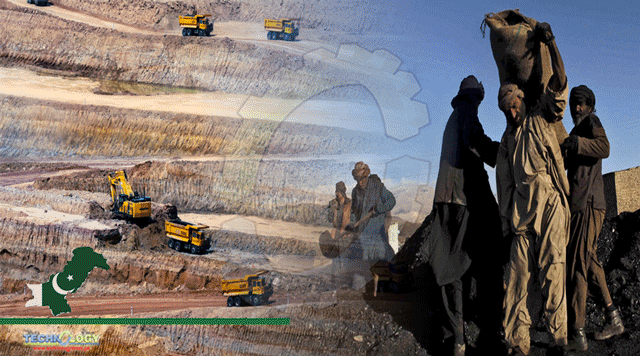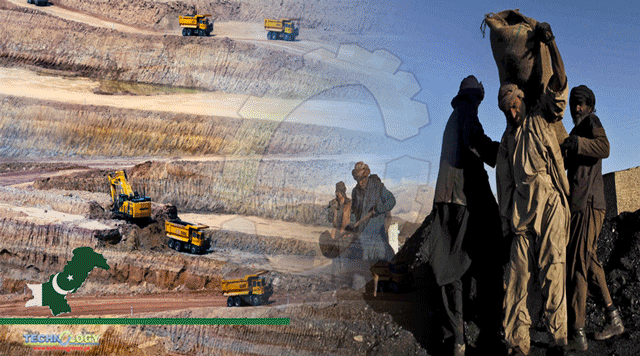Pakistan is expanding domestic coal and lignite production in a bid to replace costly fuel imports that are bearing down on its foreign exchange reserves and exacerbating circular debt in the power sector.

KARACHI — However, burning domestic coal is said to be more polluting than other fuels, undermining Islamabad’s efforts to bring in policies to address climate change.
Work on the third phase of the Thar Coal Block II mine expansion is set to begin this year at an estimated cost of $93 million, according to the Sindh Engro Coal Mining Company (SECMC), a public-private enterprise operating the mine since 2019 in the southeastern district of Tharparkar. The second phase of expansion is underway with the help of China Machinery Engineering Corp. and Chinese bank loans, in addition to local financing. The series of expansions will scale up the annual production of lignite from 3.8 million tons to 12.2 million tons by 2023.
The output from the second phase of expansion will feed two 330 MW coal-fired power plants being built under the $50 billion China Pakistan Economic Corridor projects, part of Chinese President Xi Jinping’s flagship Belt and Road Initiative. The power plants are expected to come on line this year.
Lignite is brown coal with low calorific value due to high moisture and low carbon content.
The expansion of the Thar coalfields is aimed at curbing coal imports to ease a staggering current-account deficit made worse by soaring international commodity prices and shipping costs. Pakistan’s current-account deficit ballooned to an unprecedented $9.09 billion between July and December last year, as imports continued to outstrip exports during the post-COVID economic recovery. Pakistan had to seek a $3 billion loan and a deferred payment facility on the import of petroleum products from Saudi Arabia last year to stabilize forex reserves.
In recent years, high volatility in international oil prices, soaring LNG prices and dwindling local gas reserves have spurred public-private spending, particularly Chinese investment, in Pakistan’s coal power sector. Until now, four coal-fired power plants with 4.62 GW of total installed capacity have joined the grid, while another three plants with an aggregate capacity of 1.98 GW are expected to come online over the next two years — all under CPEC. In addition, growing demand from cement factories banking on a global construction boom has tripled coal consumption over the last five years to 21.5 million tons per annum.
Consequently, the share of coal in Pakistan’s import bill for the year ended June 2021 shot to 24% from over 2% in previous years, according to data from the Pakistan Bureau of Statistics. Currently, only the power plant at Thar Coal Block II is running on indigenous coal.
A spike in coal power generation is in line with global trends, where countries including China, the U.S. and India have turned to coal to meet heightened demand following the lifting of COVID-19 restrictions.
Meanwhile, hydropower projects vital to the country’s clean energy transition — including those under the CPEC — have faced delays due to COVID-19, security and financial constraints.
The Dasu hydropower project was temporarily halted after a suicide attack last July claimed the lives of 10 Chinese workers in northern Pakistan. The development of the Diamer-Basha Dam is hindered by territorial disputes with India over Kashmir and community backlash over land acquisition. Likewise, the Kohala and Azad Pattan power projects are awaiting Chinese loan disbursement.
Authorities contend that the expansion of Thar Coal Block II will reduce the price of indigenous coal from $60 to $27 per ton — making it the country’s cheapest power source and leading to annual savings of $420 million. Pakistan is currently importing coal at around $200 per ton.
“We are compelled to use this cheap source of energy because we cannot keep using dollars to run power plants running on expensive furnace oil and RLNG (re-gasified liquefied natural gas),” Sindh Provincial Energy Minister Imtiaz Shaikh told Nikkei Asia. “We would like to mix 20% Thar coal [in power plants running] with imported coal. Then we will move towards converting coal to liquid and coal to gas.”
The cost of operating thermal plants has become punishing due to expensive fuel and the cost of diverting scarce freshwater, which leads to underutilization of the plants, said Omar Cheema, director of London-based renewable energy consultancy Vivantive.
In addition, the government delayed fixed capacity payments and subsidies to power companies for years owing to fiscal constraints, resulting in snowballing debt within the country’s power sector. The total stock of circular debt in the power supply chain now tops $14 billion — over 5% of GDP. Around $1.1 billion in capacity payments remain outstanding to CPEC power projects.
Reducing circular debt has been a prior requirement for the revival of a $6 billion IMF loan. The SECMC claims that the expansion of their mine can lead to a reduction of $418 million annually in circular debt.
But the problem is that burning lignite and domestic coal is terribly polluting because it emits more carbon dioxide and air pollutants per unit of energy compared to other fossil fuels, according to experts.
